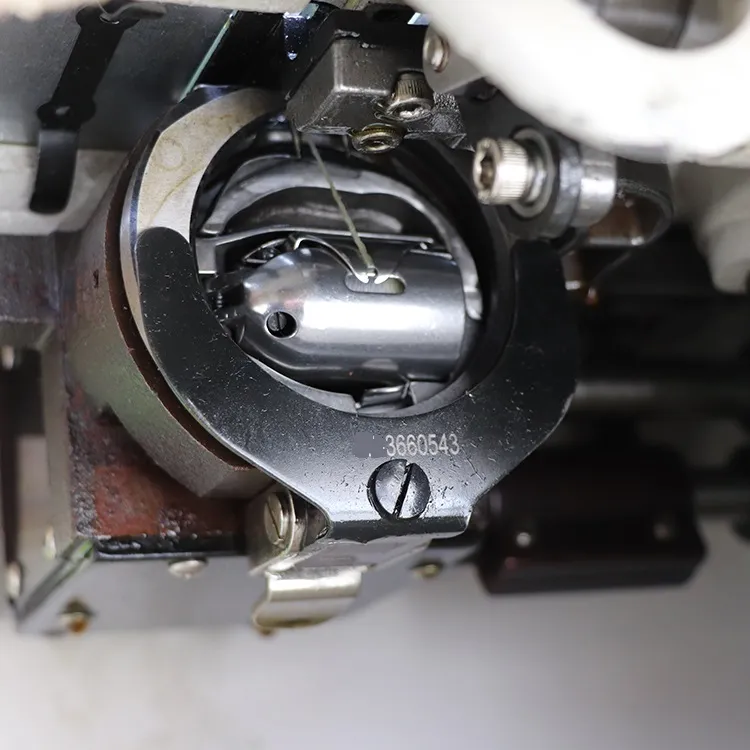Choosing the Best Industrial Serger Machines for Efficient and Professional Sewing Projects
Understanding Industrial Serger Machines Essential Tools for Seamless Finishing
In the world of garment manufacturing and textile production, the importance of precision and efficiency cannot be overstated. One of the unsung heroes behind many perfectly finished garments is the industrial serger machine. These specialized sewing machines are designed to create clean, professional seams while simultaneously trimming excess fabric, an essential feature in high-volume production settings.
What is an Industrial Serger Machine?
An industrial serger machine, also known as an overlock sewing machine, is a type of sewing machine that uses multiple threads (usually two to five) to stitch and finish seams. Unlike traditional sewing machines that only create a single line of stitching, sergers can sew, cut, and finish edges all in one step. This capability not only saves time but also enhances the overall durability and stretch of the garment, making it ideal for stretchy fabrics like knits and jerseys.
Key Features of Industrial Serger Machines
1. Multiple Thread Capability Most industrial sergers are designed to handle multiple threads, allowing for various stitch types. This variability is crucial for different fabrics and ends up reducing the likelihood of fraying or unraveling.
2. Speed and Efficiency Industrial sergers operate at much higher speeds compared to domestic models, capable of stitching thousands of feet of fabric per hour. This rapid production capability is vital in a fast-paced manufacturing environment, helping meet tight deadlines.
3. Versatile Stitches These machines can accommodate a variety of stitches, including overlock, flatlock, and rolled hems. This versatility means that manufacturers can use the same machine for different types of garments, from simple t-shirts to complex activewear.
4. Robust Build Industrial sergers are built for heavy-duty use, often featuring metal components that withstand the rigors of daily operation in a factory. This durability translates to longer lifespans and reduced maintenance needs.
industrial serger machines

5. Ease of Adjustment Many industrial sergers come equipped with advanced tension control and stitch length settings, allowing operators to quickly adjust their settings based on fabric type and desired stitch characteristics.
Applications in the Garment Industry
The applications of industrial serger machines are vast. They are commonly used in
- Apparel Manufacturing In garment factories, sergers are crucial for creating finished edges on clothing to prevent fraying and for constructing seams on stretch fabrics. - Home Textiles In the production of home textiles, such as linens and curtains, sergers offer clean finishes that enhance the overall aesthetic. - Costume and Fashion Design Designers often utilize sergers for sample making and production, as they allow for quick prototyping with professional-quality finishes.
Choosing the Right Serger
When selecting an industrial serger, several factors should be considered. These include the machine's speed, the number of threads it supports, ease of use, and the types of fabrics it can handle. Additionally, assessing after-sales service and availability of spare parts is crucial, especially for businesses dependent on uninterrupted production lines.
Conclusion
In summary, industrial serger machines play a pivotal role in the textile and garment industry by ensuring quality finishes and enhancing productivity. Their ability to perform multiple functions simultaneously makes them indispensable tools in manufacturing environments, where efficiency and precision are paramount. As the fashion industry continues to evolve, the significance of sergers only grows, symbolizing the blend of technology and craftsmanship that defines modern apparel production. Investing in a high-quality industrial serger machine can be a game-changer for any business striving for excellence in garment manufacturing.
-
Leather Sewing Machine: The Industrial Standard for Tough MaterialsNewsJul.18,2025
-
Sail Making Machine: Heavy-Duty Stitching for Industrial and Marine NeedsNewsJul.18,2025
-
Sling Sewing Machine: The Backbone of Heavy-Duty FabricationNewsJul.18,2025
-
Leather Sewing Machine: Precision for Heavy-Duty StitchingNewsJul.18,2025
-
Big Bag Sewing Machine: Powering the Future of Bulk PackagingNewsJul.18,2025
-
FIBC Sewing Machine: Essential Equipment for Bulk Bag ProductionNewsJul.18,2025
-
Heavy Duty Leather Sewing Machine: A Must-Have for Professional LeatherworkNewsMay.28,2025





























